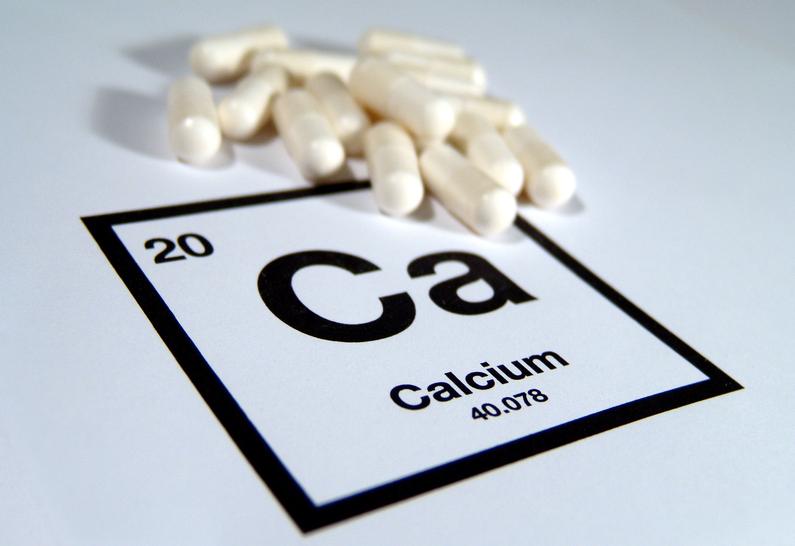By: Dr. Amay Tripathi, Associate Editor-ICN
LUCKNOW: Symbolized by sign Ca calcium is a chemical element naturally found everywhere around us. Its atomic number is 20.it is 3rd most abundant metal in earth crust after iron and alumunium.it is very reactive in nature and found in abundance as calcium carbonate in lime stone. calcium is the most abundant metal and the fifth-most abundant element in the human body. As electrolytes, calcium ions play a vital role in the physiological and biochemical processes of organisms and cells.
Calcium is a mineral that is necessary for life. In addition to building bones and keeping them healthy, calcium enables our blood to clot, our muscles to contract, and our heart to beat. About 99% of the calcium in our bodies is in our bones and teeth. Calcium is indispensable to the building of bone; and supports synthesis and function of blood cells. For example, it regulates the contraction of muscles, nerve conduction, and the clotting of blood. As a result, intra- and extracellular calcium levels are tightly regulated by the body. Calcium can play this role because the Ca2+ ion forms stable coordination complexes with many organic compounds, especially proteins.
Let’s discuss biological functions of calcium in detail.
Biological and pathological role
Bone health
Right from development of skeleton to teeth and bone calcium plays a very important role. Around 99 percent of the calcium in the human body is found in the bones and teeth; it is essential for the development, growth, and maintenance of bone. Calcium continues strengthening the bones of humans until they reach the age of 20-25 when bone density is highest. After that age, bone density declines, but calcium continues to help maintain bones and slow down bone density loss, which is a natural part of the aging process. our bodies continually remove small amounts of calcium from our bones and replace it with new calcium, a bone “remodeling” process. If the body removes more calcium from bones than it replaces, they slowly become weaker and more prone to breaking. Eating a diet rich in calcium allows the body to deposit calcium in bones so they stay strong.
Children and teens who eat calcium-rich foods build up stores of calcium in their bones that help them maintain strong bones for life. By getting lots of calcium when you’re young, you can make sure your body doesn’t have to take too much from your bones. Osteoporosis is a “silent” disease characterized by loss of bone mass. Due to weakened bones, fractures become commonplace, which leads to serious health risks. People with osteoporosis often don’t recover after a fall and it is the second most common cause of death in women, mostly those aged 60 and older. Men are also at risk of developing osteoporosis, but typically 5 to 10 years later than women. For most people, osteoporosis is preventable, and getting enough calcium in your diet is the first place to start.
Muscle contraction
Calcium regulates muscle contraction, including the beating of the heart muscle. When a nerve stimulates a muscle, calcium is released; it helps the proteins in muscle carry out the work of contraction. The muscle only relaxes again once the calcium is pumped back out of the muscle. Calcium triggers contraction by reaction with regulatory proteins that in the absence of calcium prevent interaction of actin and myosin. Two different regulatory systems are found in different muscles. In actin-linked regulation troponin and tropomyosin regulate actin by blocking sites on actin required for complex formation with myosin; in myosin-linked regulation sites on myosin are blocked in the absence of calcium. The major features of actin control are as follows: there is a requirement for tropomyosin and for a troponin complex having three different subunits with different functions; the actin displays a cooperative behavior; and a movement of tropomyosin occurs controlled by the calcium binding on troponin. Myosin regulation is controlled by a regulatory subunit that can be dissociated in scallop myosin reversibly by removing divalent cations with EDTA. Myosin control can function with pure actin in the absence of tropomyosin. Calcium binding and regulation of molluscan myosins depend on the presence of regulatory light chains. It is proposed that the light chains function by sterically blocking myosin sites in the absence of calcium, and that the “off” state of myosin requires cooperation between the two myosin heads.
Blood clotting
Calcium plays a key role in normal blood coagulation (clotting). The process of clotting is complex with a number of steps; a host of chemicals are involved. Calcium plays a part in a number of these steps. CALCIUM IONS are known to accelerate the formation of a fibrin clot from fibrinogen in the presence of thrombin.”2 The conversion of fibrinogen to the fibrin clot is a multistep process, and many studies have attempted to examine the specific step influenced by calcium. These studies traditionally have divided fibrin clot formation into two steps, (I) the conversion of fibrinogen to Fibrin monomer by the action of the proteolytic enzyme thrombin and (2) the aggregation of the fibrin monomer to form the visible fibrin clot. Examination of fibrin clot formation from this perspective has led several investigators to conclude that the proteolytic action of thrombin on fibrinogen is not altered by calcium ions and that the accelerated appearance of the fibrin clot results from an increased rate of fibrin monomer polymerization.
Calcium is most Effective for
Indigestion. Taking calcium carbonate by mouth as an antacid is effective for treating indigestion.
High levels of potassium in the blood (hyperkalemia). Giving calcium gluconate intravenously (by IV) can reverse hyperkalemia, a condition in which there is too much potassium in the blood.
Low levels of calcium in the blood (hypocalcemia). Taking calcium by mouth is effective for treating and preventing hypocalcemia. Also, giving calcium intravenously (by IV) is effective for treating very low levels of calcium.
Kidney failure. Taking calcium carbonate or calcium acetate by mouth is effective for controlling high phosphate levels in the blood in people with kidney failure. Calcium citrate is not effective for treating this condition.
Likely Effective for
Weakened bones (osteoporosis) caused by corticosteroid drugs. Taking calcium along with vitamin D seems to reduce the loss of bone mineral in people using corticosteroid drugs long-term.
Parathyroid gland disorder (hyperparathyroidism). Taking calcium by mouth reduces parathyroid hormone levels in people with kidney failure and parathyroid hormone levels that are too high.
Osteoporosis. Taking calcium by mouth is effective for preventing bone loss and treating osteoporosis. Most bone growth occurs in the teenage years. After that, bone strength in women remains about the same until age 30-40. After age 40, bone loss typically occurs at rates of 0.5% to 1% per year. In men, this bone loss occurs several decades later. Bone loss is greater in people getting less than the recommended amount of calcium from their diet. This is very common among Americans. Bone loss in women over 40 can be reduced by taking calcium supplements. Some researchers estimate that taking calcium for 30 years after menopause might result in a 10% improvement in bone strength. Taking calcium alone or with vitamin D also helps prevent fractures in people with osteoporosis.
Reducing symptoms of premenstrual syndrome (PMS). There seems to be a link between low dietary calcium intake and symptoms of PMS. Consuming calcium daily seems to significantly reduce mood swings, bloating, food cravings, and pain. Also, increasing the amount of calcium in one’s diet seems to prevent PMS. Women consuming an average of 1283 mg/day of calcium from foods seem to have about a 30% lower risk of PMS than women who consume an average of 529 mg/day of calcium.
So here we see that how calcium can be associated with plethora of functions in human body and its general well-being. Hope you enjoyed this part. Stay tuned for next. Share with family and friends.
Dr Ameya Tripathi is celebrated dental surgeon, social worker, writer, dental implantologist working at Rama Dental Clinic & Implant center Mahanagar Lucknow and Gomti Nagar Lucknow as its director. His works can be visited at www.ramamdentalclinic.com
TO BE CONTINUED…..




